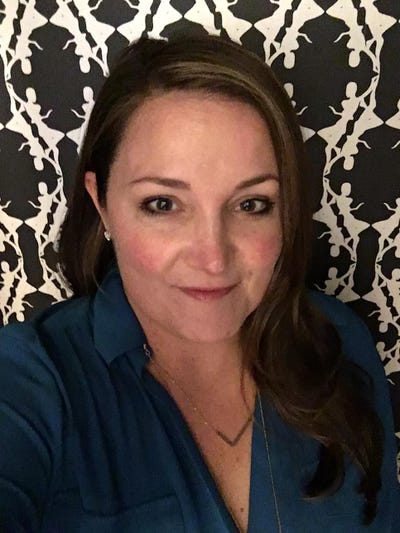Eliminating Forever Chemicals and Increasing Clean Water Access in Orange County, Calif.
What if it were possible to eliminate 99.9% of PFAS — “forever chemicals” — from our water, food waste and landfills? That’s what 374Water, a cleantech social impact company is hoping to do, through the company’s patented AirSCWO™ technology.

What if it were possible to eliminate 99.9% of PFAS — “forever chemicals” — from our water, food waste and landfills? That’s what 374Water, a cleantech social impact company is hoping to do through the company’s patented AirSCWO™ technology.
347Water recently announced that the Orange County Sanitation District of California (OC San) became its first municipal client; the County plans to use the AIRSCWO system at commercial scale to treat raw primary and secondary sludge, biosolids, and food waste. We recently chatted with Kobe Nagar, 374Water CEO and co-founder.
Waste360: Explain the problem with the "forever chemicals." Why are they there, and what damage can they do?
Nagar: “Forever chemicals” are a group of chemicals that are not biodegradable, meaning they do not break down and they accumulate in the environment and the human body. One class of chemicals are per- and polyfluoroalkyl substances (in short PFAS) which are linked to serious health issues such as liver damage, thyroid disease, decreased fertility, high cholesterol, obesity, hormone suppression and cancer. PFAS are particularly troublesome because the current waste treatment methods are limited in eliminating and breaking the strong carbon-fluorine bonds in those molecules. PFAS have been widely used chemicals in many consumer goods for more than 70 years without addressing their impact on the environment. They are showing up in food and drinking water across the US. They have been detected in the blood of almost >98% of Americans.
Waste360: We know they are prevalent, but what kinds of waste are they in? Which types of waste are affected the most?
Nagar: Forever chemicals are prevalent in waste streams. The chemicals enter our environment via gaseous emissions from incineration, industrial wastewater discharges, land disposal of consumer goods, and manufacturing facility discharges. PFAS have been used in non-stick cookware, water-repellent clothing, stain resistant fabrics and carpets, cosmetics, and firefighting foams. The use of these products has led to PFAS in municipal wastewater and biosolids. Disposal of these products has led to PFAS-contamination in landfills, landfill leachate, and landfill run-off. Use of aqueous film-forming foam in firefighting has resulted in contaminated soils, debris, and storm-water runoff.
Most of the current technologies like anaerobic digestion and hydrothermal liquefaction process are also negatively contributing to the problem since they break down the long chain PFAS molecules into short chains PFAS molecules that are more mobile in water. As we begin to clean up PFAS contamination, we are generating secondary waste streams like spent filters, membranes, resins, and granular carbon that transfer the problem to a different location and to the next generation.
Waste360: Please explain how the AirSCWO system works.
Nagar: AirSCWO™ technology uses supercritical water oxidation (SCWO) to transform the simplest and most complex wastes like PFAS and other forever chemicals to valuable recoverable resources. SCWO is a physical-thermal process that uses water above its critical point (374°C and 221 bar) as a solvent. In these conditions, in the presence of oxygen, any organic molecules are rapidly oxidized and converted to clean water, energy, inert gasses, and minerals 374Water’s AirSCWO™ technology significantly alters how we manage the waste our society generates. It is a disruptive technology that is moving us from conventional linear waste treatment and disposal to innovation that enables a circular economy and shifts the industry to true resource recovery.
Waste360: Are there any downsides to AirSCWO?
Nagar: SCWO systems have been around for a few decades but have not had widespread commercial success because of shortcomings in the design of earlier generations of the technology. When we were working with the US EPA PFAS Innovative Treatment Team (PITT) on the demonstration of PFAS elimination using AirSCWO™, EPA coined our technology “the 3rd generation of SCWO.” Our novel approach to SCWO uses air as the oxidant, which makes the technology much safer and more cost effective than pure oxygen or chemical oxidants. The way in which we preheat and feed the waste into the reactor is unique and rapidly brings the feedstock to supercritical conditions thereby minimizing risks of corrosion, charring, and plugging, the three main shortcomings of earlier versions of SCWO. AirSCWO™ is also a continuous 24x7 flow system that is best suited to treat high strength waste streams like sludges and biosolids, including those containing forever chemicals, as well aqueous industrial wastes.
Waste360: What's the size and cost of the system, and how long does it take to work?
Nagar: 374Water offers a six (6) wet ton per day system. This is the unit that Orange County Sanitation District purchased for our joint project at their Fountain Valley, CA facility. We will offer a 30 wet ton per day system next year. After that we are considering a 200 wet ton per day system for release in 2024-25. Prices vary by system size, and 374Water offers purchase, lease, and “as a service” options to enable clients and partners to acquire units in a manner that suits their financial needs. The system’s high reaction rates (seconds) enable the units to treat a high concentration and throughput of waste in a compact footprint that is about 2-3 orders of magnitude smaller than existing technologies.
Waste360: What do 374Water and OC San hope to achieve with the recent partnership?
Nagar: OC San is an innovative, forward-looking utility and government agency whose mission is to protect public health and the environment. They are well-respected leaders in the wastewater industry. OC San sees our technology as an opportunity to address all complex organic materials including plastics, PFAS, and other Contaminants of Emerging Concern (CECs). The AirSCWO™ project is another example of OC San’s long history of demonstration new and innovative technologies to improve wastewater treatment and resource recovery. It continues their tradition of innovation by using the newest and most up to date science and technology. The overall solution includes a sludge pretreatment unit that will dewater and thicken sludge prior to AirSCWOTM treatment. 374Water and our partners, the Merrell Bros. and Hazen and Sawyer, will design, install, commission, operate, and maintain the system for six months, and then transfer operations to OC San.
Waste360: Are any other local/regional governments considering this? Is the public sector your customer target right now?
Nagar: We are engaged with many US, UK, and European municipal utilities, private and public industrial companies, waste management firms, and the US Department of Defense. All are considering the use of AirSCWO™ as a decentralized solution to treat waste at the source to reduce off-site waste hauling and disposal cost; transform waste to reusable water, energy, and minerals; and eliminate forever chemicals from the environment.
Waste360: What about professionals who handle septic, portable sanitation, etc.—could they benefit from AirSCWO?
Nagar: AirSCWO could be deployed at large festivals and events, in mixed-use residential and commercial developments, and in rural communities without access to centralized wastewater treatment.
Waste360: How widespread do you see this becoming?
Nagar: Our vision is a world with no waste, and we are relentlessly pursuing it. Global waste generation is increasing due to surges in population and globalization. Land for waste application and disposal is becoming scarce. The cost of hauling waste offsite is dependent on volatile pricing. Greenhouse gas emissions are produced in large quantities from conventional “dirty” technology. Society is looking to become more sustainable and resilient; accepting and adopting the paradigm shift that 374Water is leading will be a major step forward.
Waste360: Does the system work differently with wastewater as opposed to solid waste?
Nagar: The system uses an omniprocessor which can handle a variety of wastes. Feedstocks must be pumpable so aqueous liquids and slurries are best suited for AirSCWO™. Traditional technologies have been focused on separating water from waste to reduce volume. The beauty of the AirSCWOTM technology is that it uses the waste’s intrinsic calorific value to propel the SCWO process and create energy, and it converts the waste into water.
Waste360: With OC San, 374Water is setting this system up and will operate it initially, and then turn it over to the government. Why is it being handled that way?
Nagar: Our units are prefabricated and tested at the fabrication site. We want to make sure the project is a success. Since it’s a new technology, we will support the installation and initial operation at OC San. We are planning to operate the system for the first six months of the project for two reasons. First, we will conduct a controlled study for 3 different types of waste (primary sludge, digested sludge, and food wastes) to optimize the system performance and document system operational and treatment effectiveness. This work is best done by the designers and experts of the system. Second, OC San wants their personnel trained on-the-job by the experts, whereOC San personnel will shadow our team and receive formal training on the operations and maintenance of the AirSCWO™ system.
Waste360: As it is Women's History month, can you talk about women's contribution to the development of this system and the implementation?
Nagar: Diversity, gender equality, and inclusion are embraced here at 374Water. And for that reason, we recognize every talented individual that is bringing innovation to the industry. Dr. Tali Harif, for example, is our Director of Business Development. With over 20 years of experience in the water sector, she is trailblazing the commercialization and adoption of our AirSCWO™ systems throughout the United Kingdom and Europe. I wanted to use this opportunity to talk in broader strokes about our industry the way I see it; diversity drives innovation! The need for new and better ideas requires a “must-have” approach when creating a diverse workforce, so we encourage talented women to apply for open positions at 374Water.
Waste360: Anything else you want to share?
Nagar: We recently announced the launch of our first subsidiary outside of the US to be located in Israel. The formation of the subsidiary follows the Binational Industrial Research and Development (BIRD) Foundation's selection of 374Water to receive a grant for a cleantech project with Environmental Services Company which is the biggest hazardous waste treatment company in Israel. For a country with limited land and a growing population, adopting new and innovative technologies are necessary to meet the demand for sustainable, resilient, waste management solutions.
About the Author
You May Also Like




